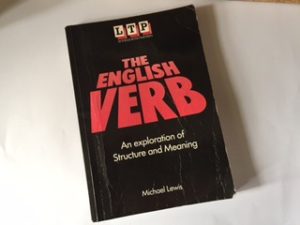Ever wondered why when you’re teaching verb tenses that the simple present isn’t about the present?
As readers of this blog will know by now, I’m keen on the idea of threshold concepts. A threshold concept, as defined by Glynis Cousins, is ‘central to the mastery of one’s subject’, especially because it enables teachers to ‘make refined decisions about what is fundamental to their teaching’.
Last time I wrote about threshold concepts was in regard to the teaching of phonics. This time the focus moves to that of grammar, in particular the teaching of verb tense.
Despite the fact that the government now places much more emphasis on the teaching of grammar, I find that many teachers are still somewhat confused about verb tense.
So what is verb tense?
To a linguist, verb tense is really a technical term and it is marked by a change in the base form of the verb. The base form of the verb is the infinitive without ‘to’ and it only inflects in three ways: by the addition, -s, -ed and -ing. What will come as a bit of a surprise to many teachers is that Michael Lewis, author of The English Verb, claims that there are only two tenses in English. These are: the simple present and the simple past.
Now whenever I talk to teachers and ask them what the simple present is used for, they almost always say that it used to talk about the present. But is it? Here are some examples:
- Water boils at 100 degrees C.
- The sun seldom shines here.
- The train leaves on Saturday at 8 am.
- My daughter works in Manchester.
- Take an egg, break it into a cup and beat thoroughly.
- We always go to France for our summer holidays.
- Ronaldo picks up the ball, waltzes past three defenders and scores.
- “So, last night I was sitting in the pub when this geezer walks in and shoots the guy next to me…”
- There are some beautiful buildings in Oxford.
- People write such a lot of rubbish on Twitter.
- That pencil belongs to me.
- I now pronounce you man and wife.
- If you draw a time-line on a piece of paper with the point Now in the middle, you can see that very few of the statements are about ‘Now’ or the present. So, if it’s not about the present, what are the principles governing the function or use of the simple present?
As you can see, there is no aspectual or temporal element to the simple present; neither is there any element of personal interpretation or modality. In fact the simple present is governed by three principles of general use:
- From a psychological perspective, the speaker sees the event as a single moment in time. The speaker is not interested in the temporal or durative.

- The speaker’s statement is one of fact. [Of course, the fact may be wrong, but from the speaker’s perspective the event is presented as a fact.]
- The speaker conceives the episode as being immediate, as opposed to being remote.
Lewis describes the simple present as essentially ‘the conceptualisation of the act, or state, as an undivided entity’*. From a teaching point of view, the concept is useful to the extent that it makes writers/speakers think about the function of the language they are using. And, as he advises, it’s useful to provide a wide range of examples, to reflect on them and to keep testing them against the three principles of general use.
So, in practical terms, how can this knowledge help the classroom teacher? Simple: if the writer is communicating something they perceive as a single moment in time, if that something is being mediated as a fact, and/or if the writer is trying to convey a sense of the immediate, the simple present is almost certainly the verb tense to opt for.
Michael Lewis’s book The English Verb (1986) is published by Language Teaching Publications and is highly recommended.
That book is £118!
Oh dear! I got mine when it was first published and it is a great book. There must be a copy somewhere that’s cheaper than that. Surely?